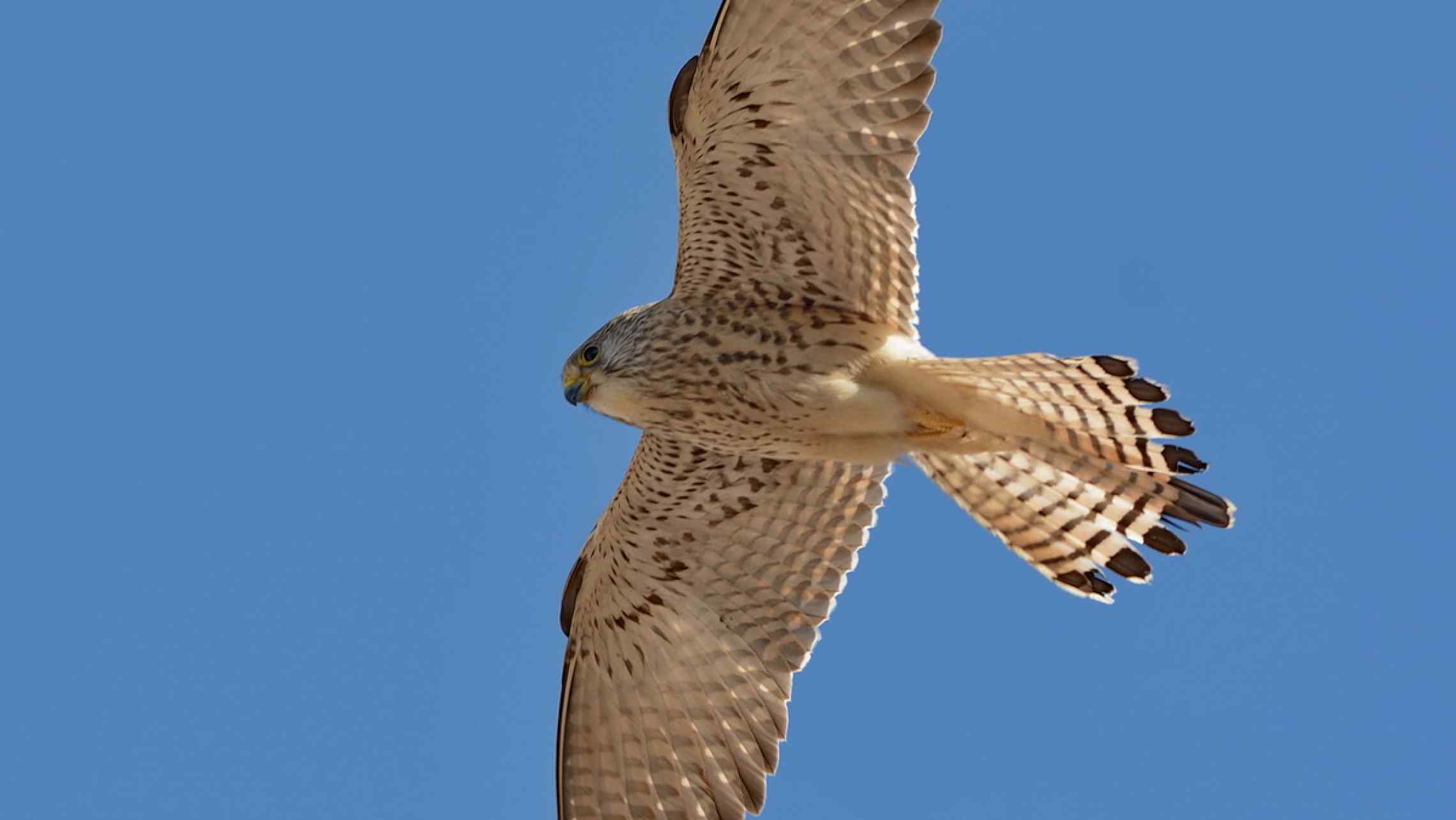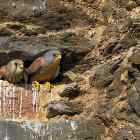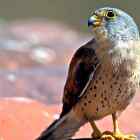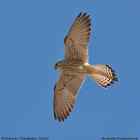EXPERTS AGREE ON THE IMPORTANCE OF THE PROTECTION OF AGRICULTURAL HABITAT IN THE CONSERVATION OF THE LESSER KESTREL
For the third consecutive day experts of international renown met today at the VIII International Congress online on lesser kestrel conservation as part of the LIFE-ZEPAURBAN project; the Congress was coordinated by the Sustainability Department of the Regional Government of Extremadura. Today's programme stressed the importance of traditional farming practice in the conservation of suitable habitat for the lesser kestrel.
Danilo Ciampanella (the Director between 2013 and 2018 of the LIFE+ Project «Un falco per amico» in the region of Apulia, Italy) was in charge of opening the proceedings with a talk on the presence of the lesser kestrel in the «Murgia Alta» ZEPA.
For his part Javier Bustamante (researcher of the CSIC, Doñana Biological Station) presented the conclusions of a study of the arrival dates of the kestrels after their prenuptial migration, i.e. that made from Africa in spring. The study analyses the reasons for the varying arrival dates of the birds together with the possible effect of this factor on reproduction. This paper was followed by that of Alfredo Ortega (a top technician who is an expert on fauna, Terra Naturalis) in which he expounded the importance of the results given by the collection of data from kestrels fitted with GPS transmitters. These data allow us to determine their movements during the breeding season on their feeding and foraging areas, their preference for certain spaces, and the availability of prey.
Daniel García Silveira (a PhD student at the Doñana Biological Station) mentioned recent studies showing that wind is the differential factor in the speed of migration of the lesser kestrel. This research also provides data on how orographical barriers affect the migration of the species.
In the field of the use of habitat and sustainable farming interesting contributions were made by Ernesto Aguirre (Fundación Global Nature). As an example he quoted the La Mancha Steppes LIFE Project which aims to restore the balance between farming activities and the population of steppe birds. This is only possible by promoting agri-environmental measures which encourage landscape restoration and improve conditions for steppic birds and other species. Beatriz Rodríguez Moreno (a biologist of the GREFA) spoke in the same vein on improving habitat quality by sowing leguminous plants.
The importance of these agricultural habitats to the lesser kestrel was also mentioned by Benigno Cienfuegos (FOTEX), who devoted his paper to the project which has been implemented in the vicinity of urban ZEPAs in order to identify and analyse the species' preference for feeding habitats and find out the possible repercussions of increasing the number of the animals on which it preys.
THE CAP AND THE CONSERVATION OF SPECIES
The day ended with a round table moderated by Atanasio Fernández García, the technical director of the LIFE-ZEPAURBAN project, at which the contribution of agricultural and stockbreeding management to the conservation of the feeding grounds of the lesser kestrel and other steppic birds was analysed.
The themes discussed included the loss of traditional crops, the low profitability of traditional stockbreeding activities, and the crucial role that must be played by the new Common Agricultural Policy (CAP), which is currently under discussion, so as to guarantee environmental protection.
Javier Gonzalo (the Director General for Common Agricultural Policy of the Regional Government of Extremadura) pointed out that the new CAP stresses aspects such as ecoschemes, which will be essential for species' conservation, and also matters such as the control of fertilisers and the reduction of the use of phytosanitary products.
For his part Jesús Moreno (Director General of Sustainability of the Regional Government of Extremadura) indicated that this new CAP must constitute an improvement in the concept of nature protection. He added that there are many lines of action and that the important thing is to approach them correctly for species' conservation.
Celsa Peiteado (in charge of the Food and Agriculture Programme of Adena WWF España) acknowledged that it was too early to guarantee that all the measures of the new CAP will work. She is in favour of waiting a little and mentioned the need for putting subsidies for farmers and stockbreeders on extensive unirrigated land (those on more beneficial habitats for the lesser kestrel and steppic birds) on the same level as those for irrigated land and other production systems.
In representation of the Ministry for Ecological Transition and the Demographic Challenge, Rubén Moreno Opo affirmed that the CAP is the necessary driving force for the management and conservation of biodiversity and the development of the agricultural milieu. He considers reinforced conditionality which rejects the actions which are most harmful to the environment to be essential.
COHERENCE WITH THE EUROPEAN GREEN DEAL
Jérémie Crespin, in charge of Nature Protection Policy of the European Commission, indicated that the ecoschemes must be used as tools to prevent birds' decline and that the new CAP must be in line with and be consistent with the Green Deal of the European Union.
Antonio Aranda of the Regional Council of Castilla La Mancha considered that the environmental sector has not been sufficiently involved in the designing of the ecoschemes and that some of those being proposed, such as that of green oleaginous plants, have little environmental content.
To answer the question as to whether to face these challenges more collaboration is necessary between agricultural and environmental administrations, Javier Gonzalo and Jesús Moreno replied that all kinds of meetings have been held to achieve a good relationship between the administrators of the CAP and the environmental authorities.
As to whether the funds set aside for the conservation of biodiversity are reaching the right recipients, Rubén Moreno reminded us of the role of the autonomous regions in Spain. Their proximity to the territory allows better identification of the species and areas which need protection and it is therefore easier to be able to strengthen the investment set aside for the purpose. Jesús Moreno confirmed this idea and thought it very important to identify the areas affected so as to be able to achieve a balance between the conservation of the different species and agriculture.
Celsa Peiteado pointed out that the commitment to agriculture of a high natural value not only provides high quality food but also enriches biodiversity, which is the best way of combating depopulation.
Jérémie Crespin indicated that all measures of environmental protection will be reinforced beyond those included in the Natura 2000 Network, adding that more emphasis should be given to the restoration and recovery of agrosystems.
Finally Antonio Aranda, online with several participants, stressed the importance of advising and accompanying farmers and stockbreeders in the implementation of good environmental practices.







